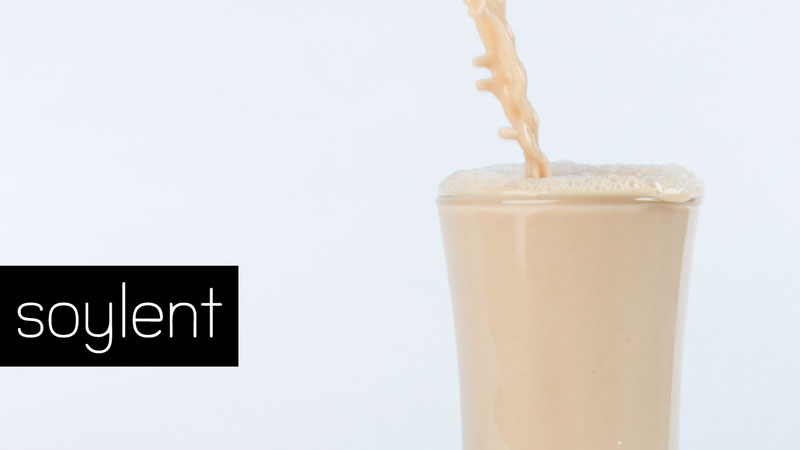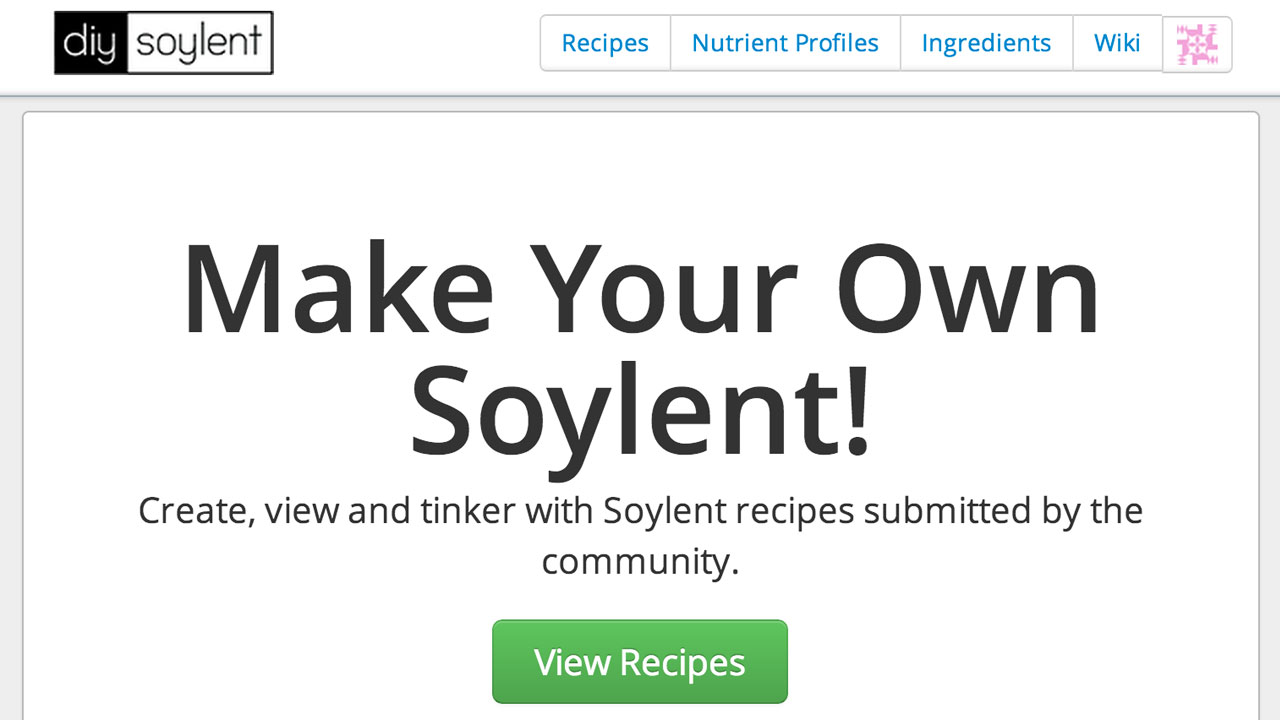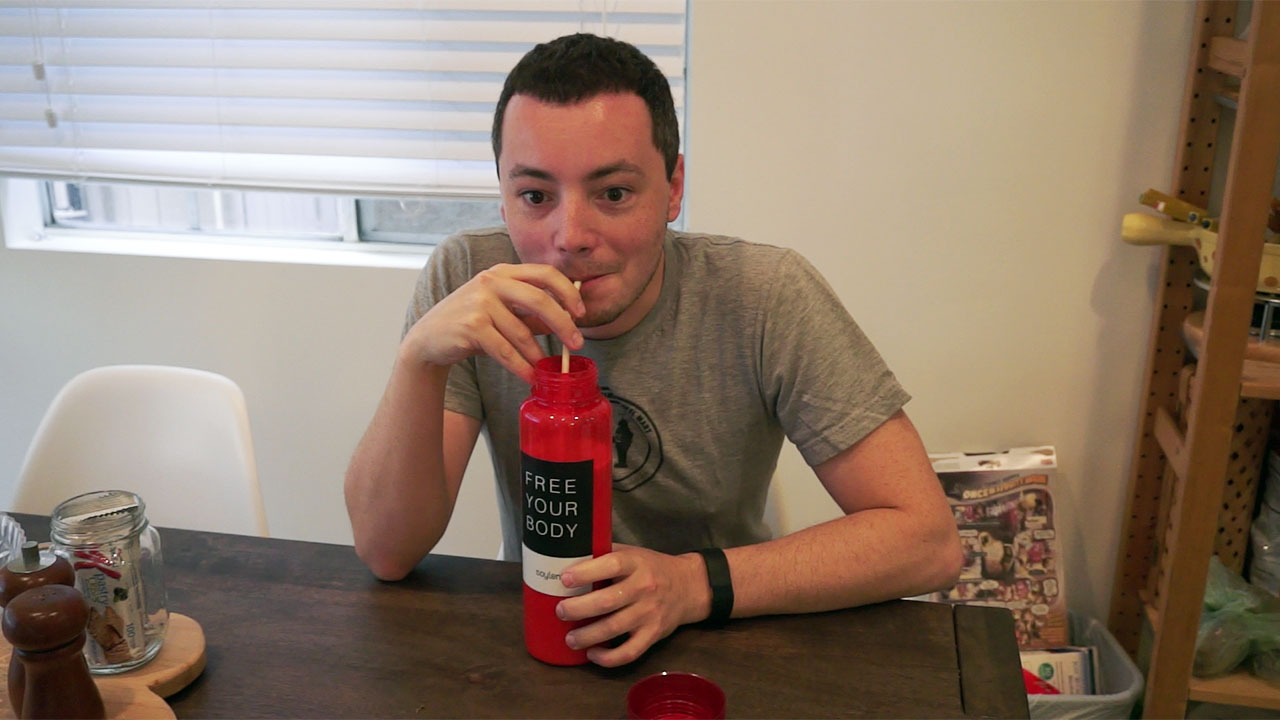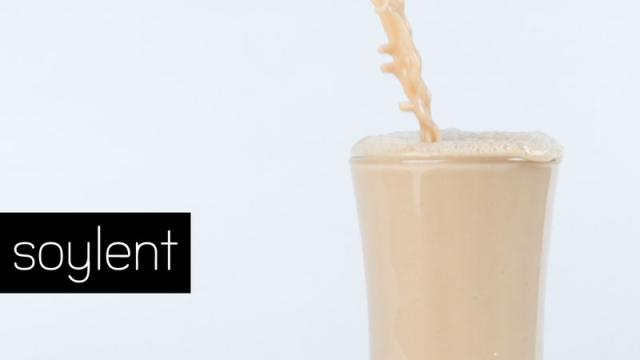Soylent, the yet-to-be-released food substitute, promises to replace meals you’re too busy to cook. It attempts to provide all essential nutrients so you only get what your body needs. With an indefinite release, some clever individuals decided to make their own and let others do the same. So, can you make a decent food substitute yourself? We decided to find out.
WTF Is Soylent?

Soylent is a substitute for food. One serving replaces one meal. Many journalists have been taking week-long or month-long challenges to see if they can go without real food for long periods of time, but Soylent wasn’t designed for that. It was designed to give you a quick, healthy meal when you don’t have the time or desire to cook, and to provide an inexpensive food alternative that can feed the hungry on a tight budget. You’re not supposed to stop eating food entirely — Soylent is meant to replace unhealthy, unbalanced meals you’d otherwise eat (or meals you’d otherwise skip) with something that gives you a nutritionally complete and quick-to-make alternative.
The official Soylent product is made up of mostly carbohydrates — 50 per cent to be exact. The rest is 30 per cent fat and 20 per cent protein. Getting these percentages involve a lot of oat flour, maltodextrin and brown rice protein isolate, plus a little oil and fibre. Mixed with a large amount of water, you end up with a dense, mildly sweet and somewhat grainy drink that’s actually not terrible — especially if you add a small amount of flavouring of your choice. (Think frozen fruit, cinnamon, chocolate syrup and stuff like that.) The creators of Soylent have spent countless hours trying to perfect the formula. After trying it myself, I’d say they’ve done a pretty good job. It’s something you’d actually drink.
But you can’t. Not yet. Soylent still isn’t on the proverbial shelves, and you can only preorder it. So, a few individuals interested in getting ahead of the game and putting in the man hours themselves decided to create DIY Soylent — an alternative that anyone can assemble from easily acquired products. A DIY Soylent website was created to track the various recipes, and that site was quickly sanctioned by the creators of Soylent themselves. They feel it embodies the soul of Soylent itself — something that began with an idea and an experiment. DIY Soylent isn’t competition, but rather an alternative option to the official product that anyone with a decent chunk of cash and some patience can throw together.
Why Make Your Own?

The DIY enthusiasts in the Soylent community wanted a way to get Soylent faster. They also wanted control over the ingredients, allowing them to tailor a recipe to their specific needs. As previously mentioned, Soylent is 50 per cent carbs. While nutritional advisors have helped choose a balance that will suit most people, some may want to use the concoction for dieting purposes or to get more protein. When you make your own food substitute, you get to decide what goes in it and what you get out of it.
The downside? This method takes a lot of work, and the final product isn’t as tasty. Cooking a good-tasting meal is hard enough, so imagine how much harder it is to create a liquid food substitute that doesn’t taste abhorrent. Furthermore, you have to invest a lot in ingredients upfront. When I started making my own Soylent, I spent about $150. While this isn’t much for months worth of “food”, it is quite an investment to make in something that you may think tastes so bad you’d never drink it. These are the risks you have to be willing to take before embarking on a DIY Soylent adventure. Of course, if you wind up with a recipe you enjoy, you’ll have a food substitute that suits your tastes and your body better than the official product can.
Is Soylent Healthy?
The Soylent team didn’t just create a formula on its own — it spent a lot of time getting it right and consulting nutrition experts to make ensure Soylent was safe to eat. You might not be able to say the same for the stuff you make yourself, however, and you should talk to your own doctor before you start making a food substitute in your kitchen. Furthermore, there are some issues with the idea of replacing foods in general. I asked Las Vegas-based dietitian Andy Bellatti to share his thoughts:
This is a perfect example of “nutritionism”, or the notion that all that matters when it comes to nutrition are calories, fibre and protein grams, and vitamin and mineral content. Unlike Soylent, whole foods offer other beneficial compounds (like phytonutrients and antioxidants) for our health. This is the same reason why, no, you can’t subsist on a diet of highly processed junk food and “make up for it” by taking a multivitamin every day.
Soylent has been marketed as a product that makes life more convenient because “food is a hassle”. That elimination of cooking in many people’s lives has been a problem. We’d be better off reconnecting with real food, rather than straying even further from it. Food is meant to engage all of our senses, with an array of flavours, textures and smells; subsisting on nothing but a powder mixed with water takes all the fun out of eating.
Also, just because you can technically live off of something for a long time doesn’t mean you should. Soylent wouldn’t cause harm per se, but simply because it statistically meets human nutrition needs doesn’t make it a healthful option.
Overall, Andy feels that if you’re too busy to prepare simple, healthy meals — shake-based or otherwise — you’ve got a bigger problem at hand. We shouldn’t have lives that prohibit us from eating healthy options because we can’t spare an extra 10 minutes per meal. After all, it’s really easy to cook good meals at home without spending a lot of time — especially if you plan them out in advance (or freeze them).
You should make time for actual food. Even the creators of Soylent think so, and they don’t consider their product a substitute for every meal of the day for the rest of your life. Perhaps you have it for one or two meals during the day and eat regularly at night. While real food may always provide a better option, and you should strive for that, sometimes convenience and cost realistically plays a role. Soylent, whether made or bought, costs very little per meal in comparison to actual food. It also only takes a minute to prepare (once assembled, anyway). If you find yourself strapped for cash or in a situation where you’ll either not eat or make Soylent, it’s hard to deny its usefulness. Ultimately, you’ll have to decide what’s in your best interest.
How We Made Our Own Soylent
The DIY Soylent process can be relatively simple or somewhat difficult, depending on how you approach the process. The video above will walk you through the general process, but here’s the gist of what we did:
- Firstly, you need to create an account on the DIY Soylent site.
- Start by creating a nutrient profile. This involves answering some simple questions, like your height, weight, sex, age, level of exercise and weight goals. In addition to this, you’ll need to choose a balance between carbohydrates, fats and proteins. You already know the breakdown of official Soylent (50-30-20), but you can pick other options that relate to specific diets and goals. You can also just move the sliders to designate the percentages you want regardless of whether or not they fit into a preset option. When you’re finished, save the nutrient profile.
- Now you can look through existing recipes. Before you pick an existing one from the list, you’ll want to narrow down a few things. Using the options in the lefthand menu, choose your country to make sure you can purchase the products listed in any given recipe. After that, choose a completeness level of 100 per cent so you don’t get any unfinished recipes. Finally, you can choose to sort by a variety of factors such as price and popularity.
- When you’ve sorted out your options, choose a few recipes that seem appealing. In the US, People Chow and Bachelor Chow are the most popular, complete options at the time of this writing. Chose whatever you’d like to start with and click on a link to view it. Click the duplicate button below it’s name to make a copy in your account and save the recipe as private.
- Once you have a copy, go beneath the ingredients to find the current nutrient profile applied to the recipe. In many cases, it will be the default US government DRI, male 19-50, 2000 calories profile. Click the change link to select the nutrient profile you created in step two, then click go. The page will reload and show you how your recipe of choice fits with your nutritional goals. Most of the time you’ll find out you’re getting too much Niacin and Chloride, which is a common problem with many of the recipes. Fortunately, slight excess amounts of these nutrients won’t harm most people, but some may have adverse reactions. If you have concerns about any recipe providing too much of anything, discuss your plans with your doctor before proceeding.
- You’ll see what you have too much and too little of. Amounts you get perfect will be in green, while problem quantities will have a red tint. Simple change the numbers in the recipe to increase or decrease specific ingredients, save and check the nutrient breakdown until you get the right mix.
- Once you have a recipe that matches your nutrient profile, you can just buy everything you need using the links listed by each ingredient. Once you’ve purchase everything, you’ve got what you need to start making your own Soylent.
Those steps show you how to actually formulate a recipe and get the ingredients you need, but what do you do once everything arrives? You’ll want to pick up a food scale to measure the weight of each item. Simply measure each ingredient as listed in the recipe, combine all the dry ingredients in a bowl, and then separate that dry mixture into thirds. Each third accounts for one daily meal. Most recipes call for oil, but you’ll want to add that when creating the drinkable product itself, since adding it to the dry mix will reduce its shelf life from months to days.
After the assembly process is complete, making a DIY Soylent meal will feel like a breeze. You just dump the ingredients into a blender along with about 500mL of water, almond milk or whatever you prefer — though you may want to experiment with the quantity to find a consistency that suits you best — and blend for a minute. You can also add flavouring like frozen fruit, cinnamon, vanilla, chocolate syrup or whatever else you’d like to try. Some people enjoy ice because it makes it feel more like a smoothie. Most people prefer it chilled too, so if you don’t add ice you’ll want to let it sit in the fridge for a while. You’ll find out what works for you through experimentation, but once blended you’re done! If all goes well, you may actually enjoy your DIY food replacement.
My Experience

Note: Watch me go through the DIY Soylent trials in the video at the top.
I tried a couple of DIY recipes as well as an advance version of the official Soylent product to get a good idea of what worked best. As you’ll see in the above video, the first batch didn’t taste very good. In fact, by the time I worked my way through it, I felt like gagging. I continued to adjust and try new options, but overall the DIY Soylent didn’t taste very good. I compared the taste to a glass of predigested saltine crackers soaked in water for several hours.
With further alterations, I was able to get the flavour of the DIY Soylent to a more tolerable place, but it still felt like I was drinking mostly oat flour — possibly because I actually was drinking mostly oat flour. And since the stuff wasn’t quite as water soluble as you’d want from a drink mix, chunkiness was a serious issue.
The folks in charge of making the official Soylent altered their recipe due to similar concerns in earlier batches. The near-final recipe I tasted was smooth with a mild and inoffensive flavour. Compared to what I’d been making, it was downright delicious. In my experience, the official recipe tastes much better.
Does that mean you shouldn’t try to DIY Soylent yourself? After a lot of effort, I’d rather not put in the time until the DIY community figures out a way to make the official recipe — which was posted on the Soylent blog recently. Despite following popular recipes and trying to make adjustments from the advice of a member of the real Soylent team, I couldn’t create anything that came close to the level of quality of the real stuff.
While making your own Soylent is an interesting prospect and a pretty unusual DIY project, I’d recommend holding off. Try the real stuff when it’s available to buy and see if you like that. If you do, wait until a DIY recipe can truly mimic that level of quality. You don’t have to buy as much of the real stuff in bulk and can sample it at a much lower cost. Making it yourself involves a reasonably high financial investment, and you don’t want to get stuck with huge amounts of ingredients for something you don’t even enjoy.
That said, if you have a good chunk of change to blow and quite a bit of time on your hands, DIY Soylent is an interesting experiment. Perhaps you’ll have better luck than me in creating a food substitute in your own kitchen that you’ll actually enjoy.
Music: Podington Bear

Comments
4 responses to “DIY Soylent: Should You Make Your Own Food Substitute?”
The chunk of change is the main reason I haven’t gone into DIY soylent, though I have researched it a lot.
There’s almost a catch-22, to try it out, you don’t want to spend too much, but to drive costs down, much it needs to be bought in bulk.
Ahh well, official soylent release, hurry up!
I would love to hear the reason why they called it Soylent. Wouldnt that put people OFF of it rather than attract them to it? Marketing fail IMO.
Only the green one.
I guess because it’s a well known pop culture reference? I like the name. Tongue in cheek.
Wow, so much hype over a product which has already been done to death. Just check out any of the food replacement shakes and you pretty much have the same thing. I can’t believe how hyped up this is and how stupid people are to buy into the fact that it’s ‘something new’.